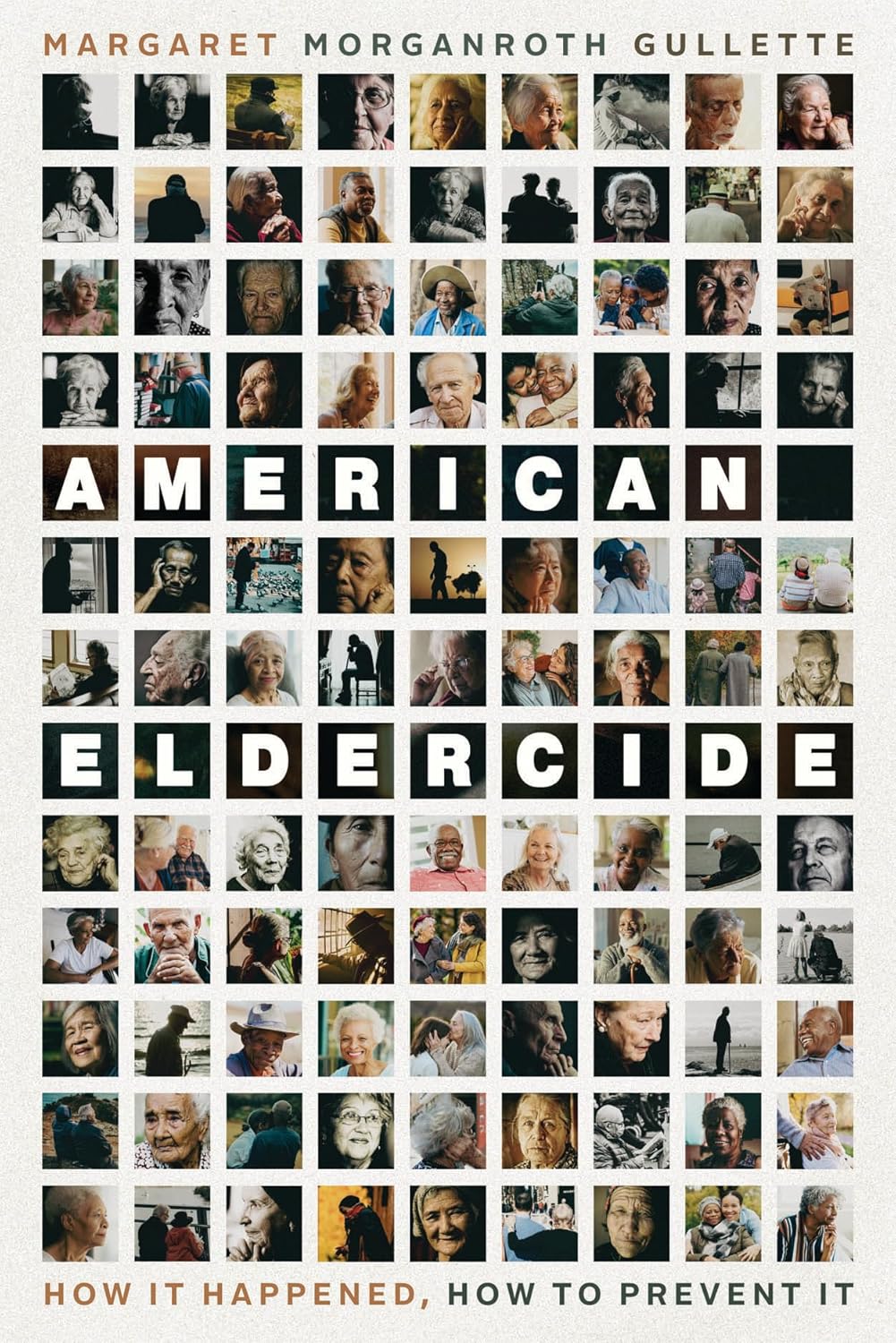American Eldercide: How It Happened, How to Prevent It
- By Margaret Morganroth Gullette
- University of Chicago Press
- 328 pp.
- Reviewed by William Rice
- December 3, 2024
A sporadically persuasive jeremiad on what went wrong during the pandemic.

American Eldercide concerns the death of 200,000 nursing-home residents during the covid-19 pandemic. The author, Margaret Morganroth Gullette, argues that this mass die-off — in which a tiny share of the overall population suffered some 20 percent all U.S. pandemic fatalities — was thoroughly avoidable. It happened not because all nursing-home residents are old and frail, but due to neglect, mismanagement, and the ultimate, deadly expression of ageism.
Her central and very salient point is that as contained environments, nursing homes and other institutions (like prisons) should’ve been the easiest to shield from infection — and not have turned into charnel houses, as they so often did. She argues that nursing-home residents were allowed to expire in such numbers because the rest of society viewed it as inevitable that old people die and considered it better than if younger people were disproportionately hit. I think most readers would admit to harboring both those thoughts at some level.
The book is a grim rejoinder to the right-wing claims that covid was a “hoax” or plot to expand state control over citizens’ lives. Yet the way Gullette tells the story detracts from her admirable goal of protecting vulnerable people during the next pandemic. Specific sage recommendations (e.g., there should’ve been a national-masking requirement for nursing-home staff) are lost in a sea of remonstrance.
Of course, the value society places on older people affects how they are treated. But Gullette is so busy expressing outrage that anyone might associate advanced age with decline and death that she gives short shrift to what was actually done wrong and what should be done to prevent it being done again. In addition to that masking requirement, she advocates for other eminently sensible remedies, like ensuring nursing homes have early and ample access to the best personal protective equipment (PPE), antivirals, and other resources.
Gullette is propounding a simple idea that, at one point, she encapsulates in italics: “People may be old, sick, frail, or confused but still earnestly want to live.” Yet behind this truism applicable to every living creature lie some distinctly human caveats. Parents would generally die to protect their children, patriots for their country, and idealists for a cause.
The author is a pioneering commentator on ageing and opponent of ageism. (She was in her late 70s when covid hit.) Like a lot of intellectuals exploring new ways of thinking about essential concepts, her arguments are intriguing and enlightening but don’t always fare well when transferred from the theoretical to the practical.
In her quest to immediately and definitively alter our understanding of the human ageing process, Gullette strays into language that would confirm the worst fears of libertarian critics. She several times refers to “reeducation” on the issue, including “national emotional reeducation.” And she adds a new “-ism” to the list of social prejudices that should be avoided: “dementism.”
But unlike racism, sexism, or even ageism, what she calls “dementism” is at least partly a rational reaction to a serious medical condition, dementia, that has an identifiable, often extreme impact on sufferers’ relation to the world and can cause frustration, exhaustion, and heartbreak for caretakers. Gullette courts unintentional laughter when she reports that the philosopher who came up with the word “dementism” was seeking to describe “the specificity of resentment against the deeply forgetful.”
Americans shocked by the return of Donald Trump will find here an example of how his progressive opponents have lost the ability to connect with voters on complex and sensitive issues. No allowance is made for longstanding, deeply ingrained beliefs. The new thinkers seem to assume that if you’re severe enough in rebuking errant thought, you’ll stamp it out. In fact, as evidenced by recent election results, it’s more likely to defiantly flourish.
Yet along with raising hackles, the author’s militant anti-ageism also raises important awareness. It’s easy for the young to fall into the misconception that someone with a head of white hair moving slowly down the sidewalk isn’t just in a different stage of life but is somehow a different kind of being. But the older we get (your reviewer is 62), the more we come to realize our essential nature doesn’t change much with the years.
Gullette notes that the pandemic eldercide was really an accelerated and well-publicized example of the unnecessary deaths — along with neglect and abuse — occurring every day in the nation’s poorly regulated nursing facilities. She calls for a memorial on the National Mall to the nursing-home victims of covid and has specific ideas for how it should be constructed.
She complains, too, that to the extent the eldercide was reported in the media, those reports didn’t include the voices of the survivors. But did that journalistic failure reflect ageist bigotry or merely the difficulty in reaching locked-down residents who often lacked phones, internet access, or, in some cases, the ability to express themselves clearly? Gullette predictably chooses the damning explanation.
William Rice is a writer for political and policy-advocacy organizations.

